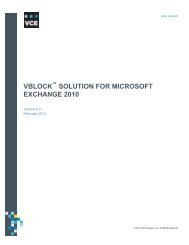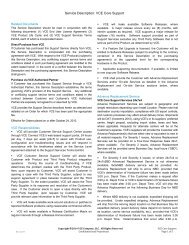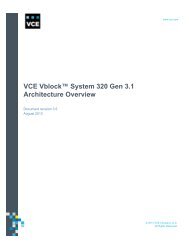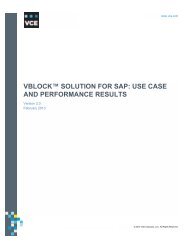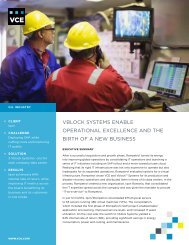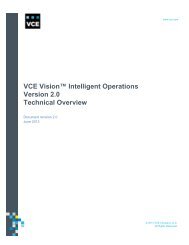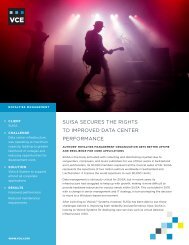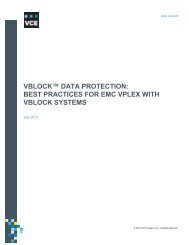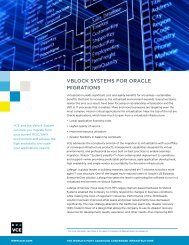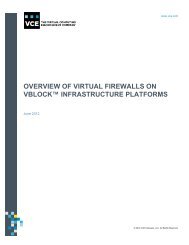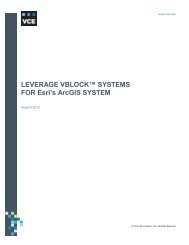Vblock Solution for Trusted Multi-Tenancy: Design Guide - VCE
Vblock Solution for Trusted Multi-Tenancy: Design Guide - VCE
Vblock Solution for Trusted Multi-Tenancy: Design Guide - VCE
You also want an ePaper? Increase the reach of your titles
YUMPU automatically turns print PDFs into web optimized ePapers that Google loves.
Tenants should have control over relevant portions of their service. Specifically, tenants should be<br />
able to:<br />
• Provision allocated resources<br />
• Manage the state of all virtualized objects<br />
• View change management status <strong>for</strong> the infrastructure component<br />
• Add and remove administrative contacts<br />
• Request more services as needed<br />
In addition, tenants taking advantage of data protection or data backup services should be able to<br />
manage this capability on their own, including setting schedules and backup types, initiating jobs, and<br />
running reports.<br />
This tenant-in-control model allows tenants to dynamically change the environment to suit their<br />
workloads as resource requirements change.<br />
Service provider management and control<br />
Another goal of trusted multi-tenancy is to simplify management of resources at every level of the<br />
infrastructure and to provide the functionality to provision, monitor, troubleshoot, and charge back the<br />
resources used by tenants. Management of multi-tenant environments comes with challenges, from<br />
reporting and alerting to capacity management and tenant control delegation. The <strong>Vblock</strong> System<br />
helps address these challenges by providing scalable, integrated management solutions inherent to<br />
the infrastructure, and a rich, fully developed application programming interface (API) stack <strong>for</strong> adding<br />
additional service provider value.<br />
Providers of infrastructure services in a multi-tenant environment require comprehensive control and<br />
complete visibility of the shared infrastructure to provide the availability, data protection, security, and<br />
service levels expected by tenants. The ability to control, manage, and monitor resources at all levels<br />
of the infrastructure requires a dynamic, efficient, and flexible design that allows the service provider to<br />
access, provision, and then release computing resources from a shared pool – quickly, easily, and<br />
with minimal ef<strong>for</strong>t.<br />
© 2013 <strong>VCE</strong> Company, LLC. All Rights Reserved.<br />
12



